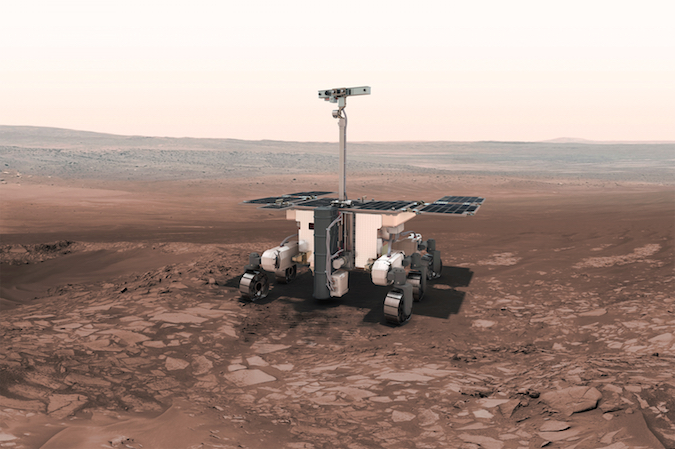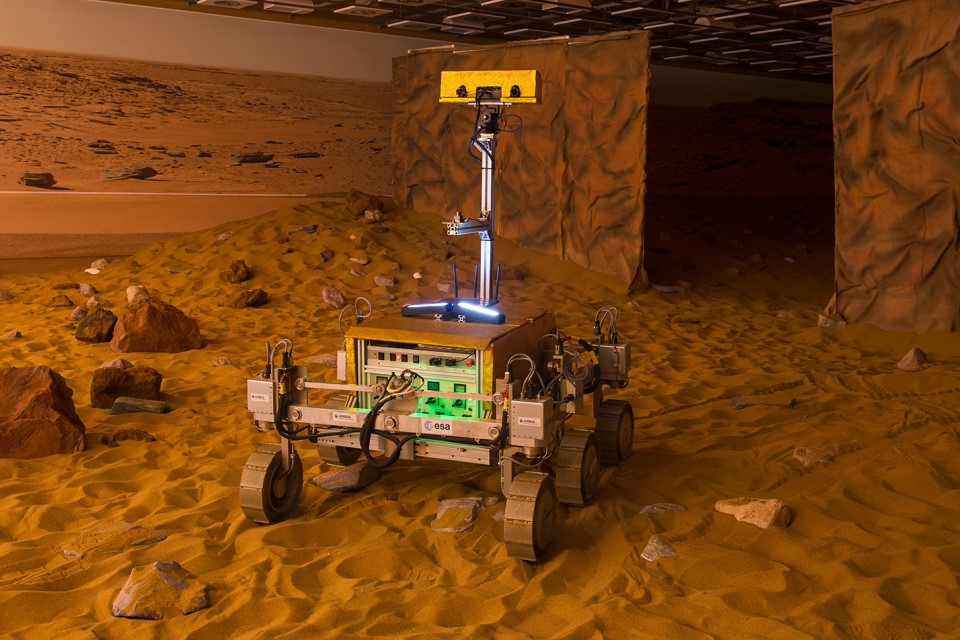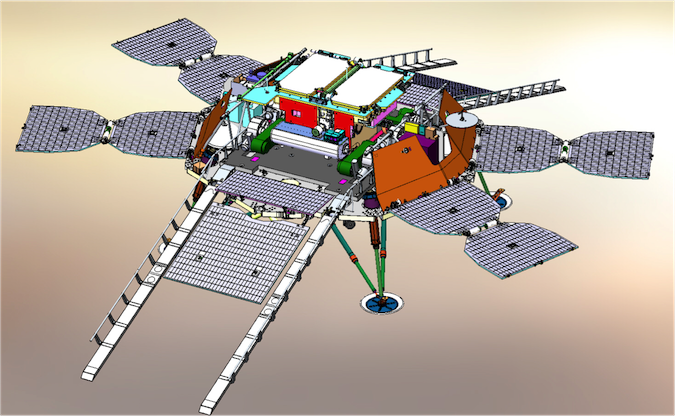
Europe’s ExoMars rover will not be ready for launch in 2018, officials said Monday, forcing a two-year delay for the ambitious mission to drill into the Martian surface and search for the remnants of past life.
Delays in the development of the European-built rover and a Russian stationary landing platform, coupled with the late delivery of scientific instruments, left no chance the mission could meet its target launch date in May 2018, the European Space Agency and Roscosmos said in a joint statement Monday.
Officials have signaled a possible delay in the ExoMars rover launch for months, warning that the robot’s development faced schedule pressures stemming from difficulties securing final manufacturing contracts with industry and delays in the mission’s science payload.
The launch of the European-Russian Mars mission is now scheduled for July 2020, the next time Mars and Earth are correctly positioned in their orbits to permit a direct trip between the planets. The landing on Mars will slip from January 2019 to April 2021.
The mission will launch on a Russian Proton rocket from the Baikonur Cosmodrome in Kazakhstan.
Russia is also building the landing module to carry the ExoMars rover through the Martian atmosphere to the surface. Europe is providing guidance systems and a landing radar to accompany the Russian descent stage, plus a carrier spacecraft to ferry the mission on the nearly year-long cruise from liftoff to arrival at Mars.
After touching down on Mars, the mobile rover will drive off its Russian-made landing pad, which will conduct its own scientific investigations in one place.
The centerpiece of the rover’s science payload is a drill to probe up to two metres, or nearly seven feet, into the red planet’s subsurface to extract core samples for analysis by the craft’s miniature on-board laboratory. Scientists have never studied material from so deep below the Martian surface, where biomarkers and organic molecules could survive from life forms that may have inhabited the planet when it was warmer and wetter billions of years ago.

A team established by ESA and Roscosmos in late 2015 evaluated whether the ExoMars rover mission could remain on schedule for 2018. The team presented its final report to the Joint ExoMars Steering Board, or JESB, in Moscow, the space agencies said Monday.
“Having assessed the possible ways to ensure successful mission implementation, the JESB concluded that, taking into account the delays in European and Russian industrial activities and deliveries of the scientific payload, a launch in 2020 would be the best solution,” the agencies said in a joint statement.
ESA Director General Johann-Dietrich Woerner and Roscosmos head Igor Komarov agreed to move the launch to the next available launch window, officials said.
The delay will add costs to the ExoMars programme, and managers will present an updated schedule and budget to ESA member states as soon as June. A previously-scheduled meeting of European government representatives in December will decide whether to approve the added cost.
The ExoMars mission comes in two parts, with the first segment already en route to Mars after a blastoff in March aboard a Proton booster. That mission, known as ExoMars 2016, includes a European orbiter designed to measure trace gases in the Martian atmosphere, including methane, and a short-lived battery-powered lander to prove out technologies required for the 2020 mission.

ESA says its portion of the ExoMars mission — comprising the 2016 and 2020 launches — will cost about 1.2 billion euros ($1.4 billion), but the agency had not secured the full slate of funding from its member states to cover the projected cost.
Before the rover’s delay from 2018 to 2020, ESA officials said its members needed to approve between 150 million and 200 million euros ($173 million to $230 million) later this year just to cover the funding shortfall for the 2018 launch.
That figure is likely to rise with the delay to 2020, which will incur additional costs to store the spacecraft after its completion and to keep the industrial team on the job another two years through launch.
ESA has been in months of tough negotiations with ExoMars lead developer Thales Alenia Space over the price of the rover mission’s final contract.
Italy is leading the ExoMars programme, with Thales’ Italian division taking charge of all European industrial work. Britain is ExoMars’ second-biggest financial backer, and Airbus Defense and Space’s factory in Stevenage north of London is charged with building the rover vehicle itself.
Email the author.
Follow Stephen Clark on Twitter: @StephenClark1.



